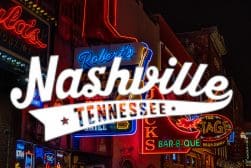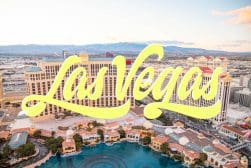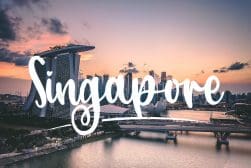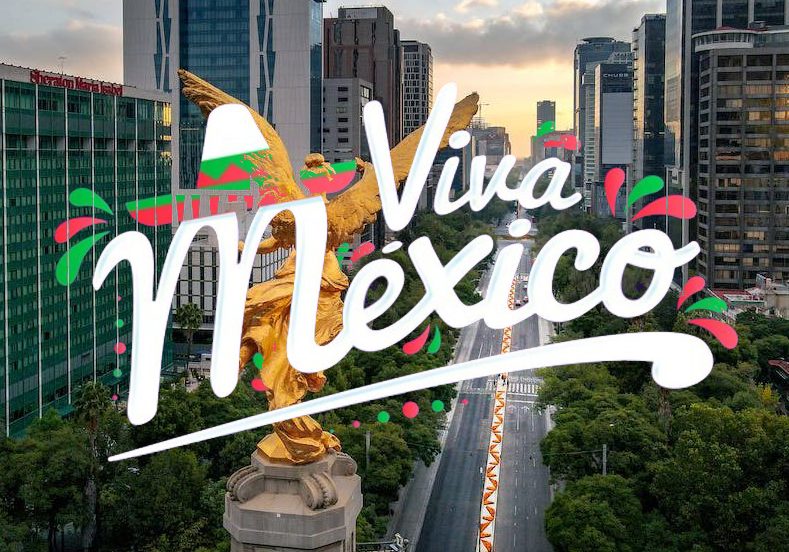
Best Places to Take Pictures in Mexico
Embark on a visual journey through Mexico's most picturesque locales, as we unveil the best places to capture stunning photographs.
Learn | Photo Locations | By Ana Mireles
Are you looking for the best places to take pictures in Mexico City?
There are quite a few of them, so it wasn’t easy to round up a manageable list.
Yes, this is my hometown – so I might be biased!
Mexico City is a city packed full of history, popular culture, festivities, and colour.
So, without further ado, here’s your virtual welcome to Mexico City with a list of my favourite places to photograph.
Table of Contents
The Well-Known (But Unmissable) Places to Take Pictures in Mexico City
Here are just some of the many unmissable places you can visit in Mexico City and take amazing photographs.
Since the city is quite big and traffic can be overwhelming, I mainly concentrated on three parts – the historic centre, Reforma-Chapultepec, and the southern boroughs.
However, if you have the time, I also recommend the Condesa and Roma neighbourhoods.
I hope you enjoy it!
Palacio de Bellas Artes
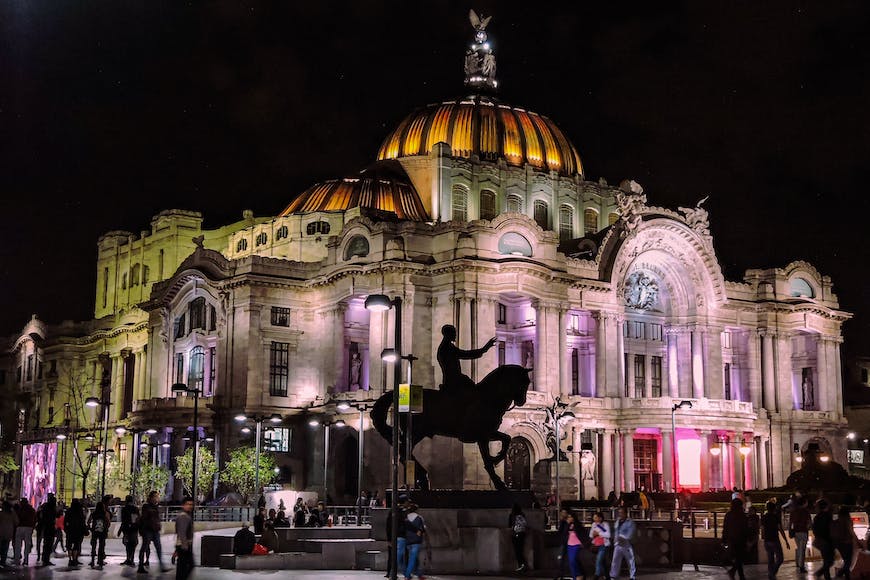
Credit: Oscar Dominguez
Literally translated as the Palace of Fine Arts, Bellas Artes is a cultural centre that houses one of the most important theatres in the city and two museums.
The current building was made to replace the National Theater at the beginning of the 20th Century as part of the Centennial celebrations.
The neo-classical design is from the Italian Adamo Boari. The construction, however, encountered complications and wasn’t ready for the Centennial. Then, the Revolution halted all work.
The project started again in 1932 under the guidance of the Mexican Federico Mariscal, who updated Boari’s design. It’s now mostly Art Deco and Art Nouveau. It was inaugurated in 1934. To this day, the building has been renovated, but it has remained unchanged.
You’ll find prehispanic decorations and artworks from Mexican muralists such as Diego Rivera and David Alfaro Siqueiros inside the building.
Best view
There’s a Sears department store across the street from Palacio de Bellas Artes. If you go to the top floor, you’ll find a rooftop bar from which you’ll have a wonderful view of the building and the surrounding park.
Best time to visit
It’s always a good time to photograph the facade of the building as the sun rises on the right and sets on the left – you’ll never have it behind the building.
Pro tip
It’s not allowed to use professional equipment to photograph Bellas Artes. So, if you’re only doing it for recreational use and won’t be applying for a permit – you won’t be able to use a tripod.
This is why you should use a high ISO and a fast lens at the widest aperture to photograph it at night.
Make sure you shoot in raw to improve the dynamic range and reduce the noise in editing.
Monumento a la Revolución (Monument to the Revolution)
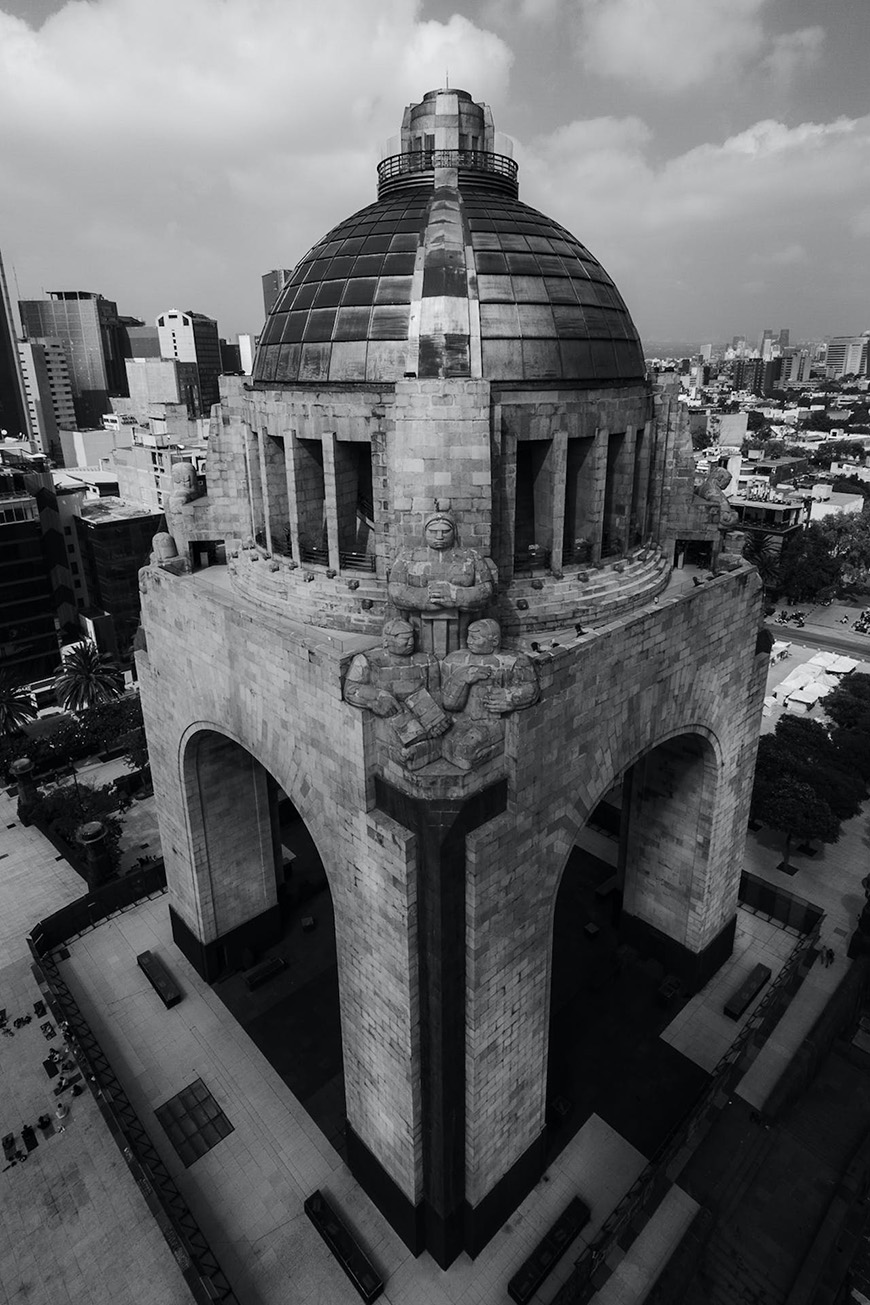
Credit: Mark Flying
The monument commemorating the Mexican Revolution is the tallest memorial arch in the world.
How Much Do You REALLY Know About Photography?! 🤔
Test your photography knowledge with this quick quiz!
See how much you really know about photography...

Originally, it was supposed to be the legislative palace for the dictatorial government of General Porfirio Diaz. The construction was interrupted by the Revolution.
After the government was overthrown, the structure remained unfinished for 25 years. Then, in 1938, president Lázaro Cárdenas authorized the project to make it a monument commemorating the Revolution’s heroes.
The original design of a neo-classical palace was changed by Carlos Obregón Santacilia, who decided on the memorial arch that we know today with a Mexican Socialist Realism style and influences of Art Deco.
The building is also the mausoleum for revolutionary heroes, and it hosts a historical museum.
Best view
The best view of the palace is from the front, incorporating the geyser-like fountains of Plaza de la República in the foreground.
Best time to visit
While I usually advise visiting landmarks during the week and in the early morning to avoid the crowds, this case is the opposite. Having people playing in the fountains in Plaza de la República adds to the joyful atmosphere in the photo.
Pro tip
Go inside the monument to visit the museum. Once inside, you’ll also be able to go outside and have a wonderful panoramic view of the city from the lookout.
Enjoying this guide? More locations for great photos:
El Ángel (Monument to the Independence)
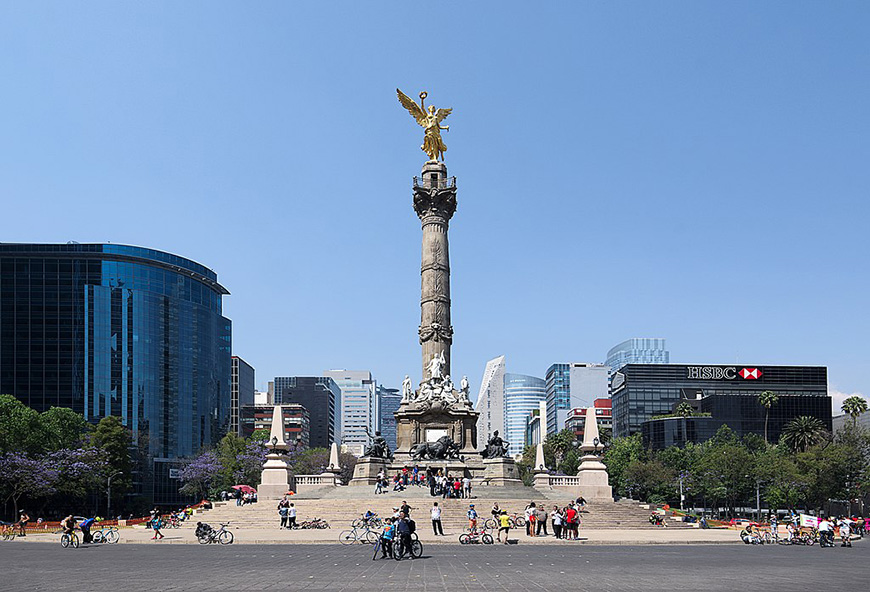
Carlos Valenzuela, CC BY-SA 4.0, via Wikimedia Commons
The monument dedicated to commemorating the Mexican Independence is commonly known as El Ángel (The Angel).
However, on top of the column, there isn’t the statue of an angel. Instead, it’s a ‘Winged Victory’ statue based on the Greek goddess Nike holding a laurel wreath and a broken chain.
The monument’s design was inspired by the July Column in Paris and the Victory Column in Paris. It was built to commemorate the Centennial of the Independence.
The Ángel is an icon of the city, and it’s the gathering point for celebrations and protests. So, you’ll often find a big crowd around it.
However, it’s also used by many professional photographers who bring their clients there as one of the photoshoot locations. Beware that you’ll need a permit to take professional photographs.
Best view
The best view of the monument is from Paseo de la Reforma.
Best time to visit
Both daytime and nighttime views are great – take your pick.
Pro tip
It’s possible to go inside the monument and go up to the lookout for a fantastic panoramic view of the city. The entrance is free, but you need a permit. The climb is on foot (about 200 steps), and you go inside in groups of 6 people for about 15 minutes at a time.
Paseo de la Reforma (Reforma Avenue)
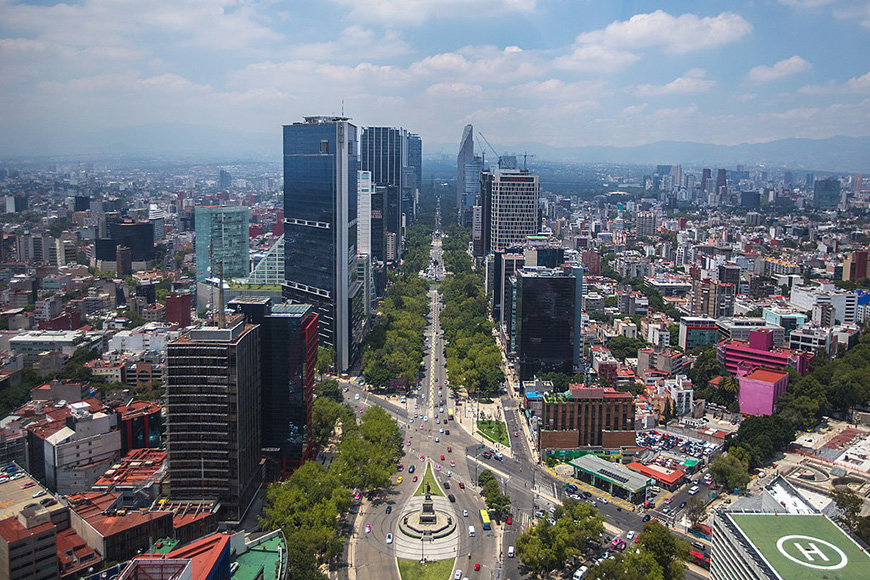
Credit: Gobierno CDMX, CC0, via Wikimedia Commons
Paseo de la Reforma is one of the widest avenues in the city. It was built during the Second Mexican Empire, and it was designed to connect the emperor’s residence (Castillo de Chapultepec) with the National Palace.
Throughout the avenue, many roundabouts are decorated by many of the city’s landmarks – including the Monument to the Independence.
On the sides, you’ll find hotels, restaurants, and many other important buildings – some of them historical, while others are modern skyscrapers.
Dividing both traffic directions, there are planters decorated with seasonal flowers. So, you’ll get a different view every time you visit.
The wide sidewalks host temporary art exhibitions, and on the street, you’ll often find parades or protests going on. Traffic is closed three Sundays of the month so cyclists can use it.
Best view
It depends on what you want to photograph.
Best time to visit
Sunset lights most of the monuments on the roundabouts.
Pro tip
Paseo de la Reforma is always very crowded – if not by cars, then by bicycles or crowds. To avoid having these distractions, try using a long exposure. This will blur all the moving subjects – if it’s long enough, it may look empty.
You’ll need a neutral density filter to avoid overexposing your shot to do a long exposure during the day.
Castillo de Chapultepec (Chapultepec Castle)
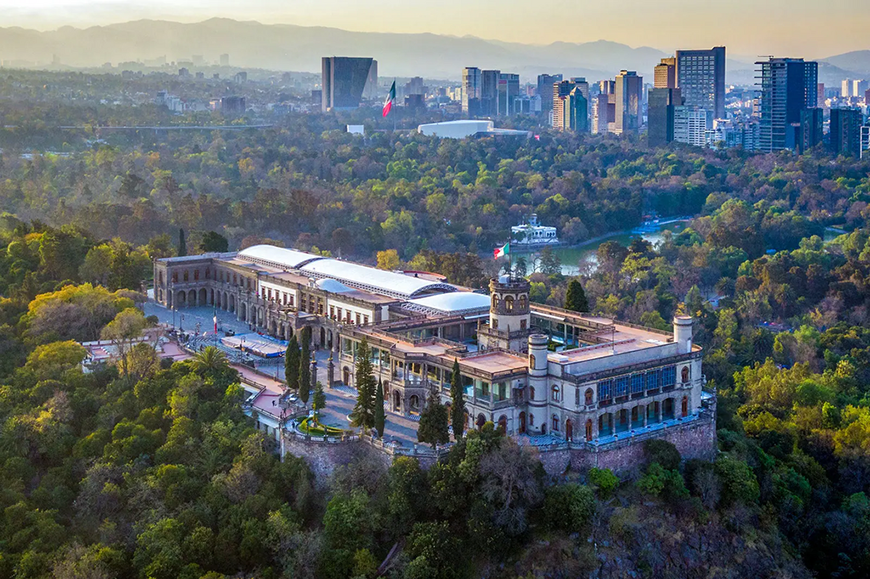
Credit: Sisgeo, CC BY-SA 4.0, via Wikimedia Commons
The Castle is built at the top of the Chapultepec hill and surrounded by the Chapultepec park – which I’ll talk about in a moment.
The current design of the Castle came from the Second Mexican Empire when Maximilian I and his wife Carlota used it as the imperial residence. However, the original building dates back to colonial times when it was used as the summer house of the viceroy.
After the Emperor Maximiliano was overthrown and executed, the building changed uses many times. It was the presidential residence during some administrations.
This continued until President Lázaro Cárdenas turned it into a National Museum of History – which remains its purpose today.
Outside the Castle, you’ll find the monument dedicated to the Niños Héroes (the Heroic Children), who were killed defending the Castle from the U.S. invasion during the Mexican-American War in 1847.
Both the Castle and the gardens offer many photo opportunities.
Best time to visit
To find less crowds, avoid weekends and holidays. However, during the week, you might run into school groups visiting with teachers and tour guides – so it’s better to visit early in the morning or late afternoon.
Pro tip
From the monument of the Niños Héroes, you’ll have a wonderful view of the city. Don’t miss the chance to take a panoramic photo.
Bosque de Chapultepec
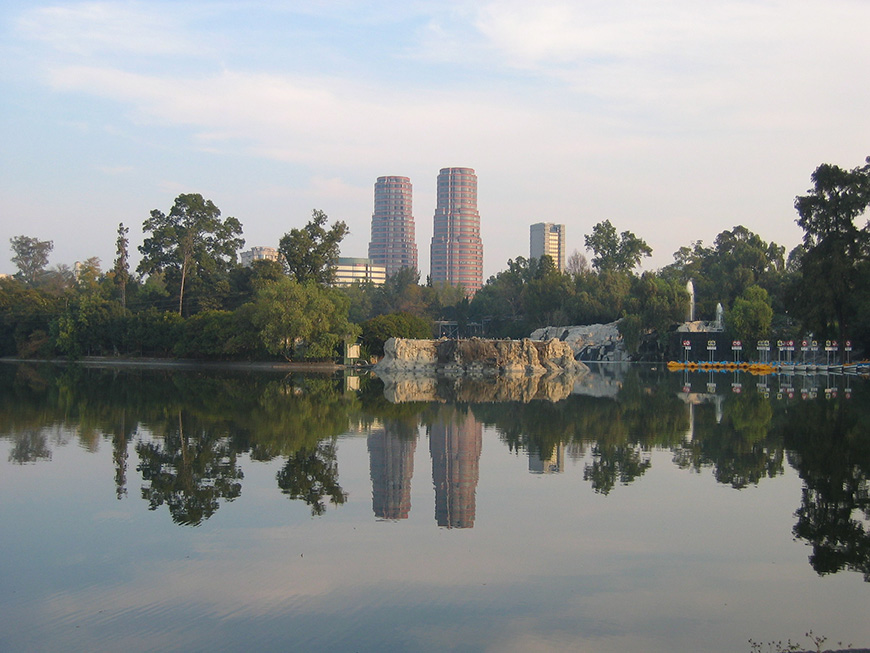
Credit: CliKLer, CC BY-SA 2.0 DEED, via Flickr
Chapultepec is the largest city park, so it’s called Bosque (Forest) de Chapultepec. It is over 1700 acres, and it’s considered the city’s ‘lungs’.
The park is divided into four sections. The main attractions in the first section include the Zoo, the Castle, the Museum of Anthropology and the Rufino Tamayo Museum.
The main feature of the second section is the Monumental fountain in the Lago Mayor – it’s the biggest one in Latin America. You’ll also find the Papalote Museum for kids and the Cárcamo de Dolores. The Aztlan Parque Urbano is under development, and it will open in the following years.
If you’re looking for a more natural setting, then you should focus on the third section. This is a Natural Preserve; you’ll find local flora and wildlife.
The fourth section was inaugurated in 2021 as part of a bigger plan to develop natural and cultural areas opened to the public.
Along Reforma Avenue and part of Chapultepec Park, you’ll find an open-air gallery hosting photographic exhibitions year-long.
Best spots
- El Sargento – this tree is over 500 years old and was supposedly planted by the poet Nezahualcóyotl.
- Tláloc – you’ll find this monumental pre-hispanic piece in front of the Museum of Anthropology.
- Lago Mayor is a wonderful body of water where you can practice reflection photography.
- Altar a la Patria – this monument hosts the remains of the Heroic Children, and you can see the Castillo de Chapultepec in the back.
- Cárcamo de Dolores – this hydraulic structure is decorated by a mural from Diego Rivera that remained underwater for over 4o years.
- Puerta de los leones – the main entrance to the park has two lion sculptures that give it its name. These sculptures were supposed to be for the Legislative Palace that later became the Monument to the Revolution.
Best time to visit
Weekdays when it’s less crowded.
Pro tip
You can host personal and professional photoshoots in the park without permission. However, you can’t use a tripod.
Zócalo
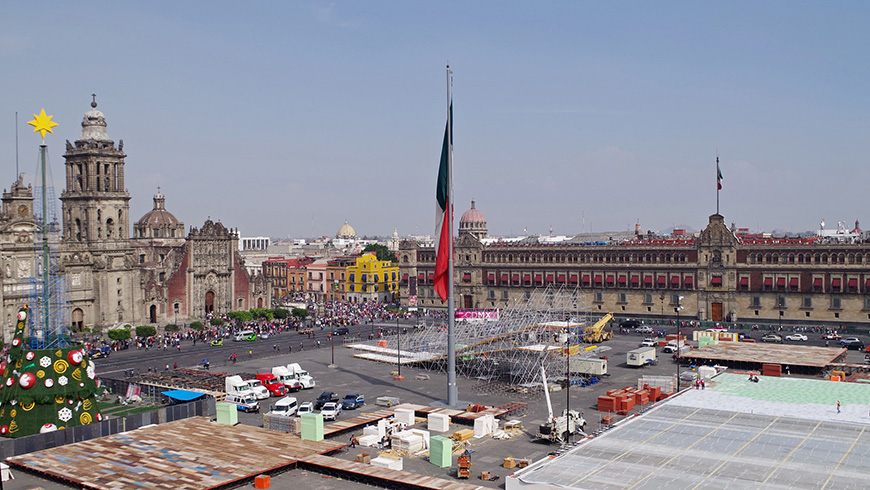
Credit: Kelvin Flores, CC BY 2.0 DEED, via Flickr
The Constitution Square is better known as Zócalo. In the pre-Hispanic era, this was the main ceremonial centre in the city of Tenochtitlán.
It’s still possible to visit the remains of the Aztec temple that was found underneath the current square. All the archaeological pieces found here are displayed in the Templo Mayor museum beside the ruins.
After the Spanish conquest, a Cathedral was built to cover the Aztec temple. Hernán Cortés built a palace on top of the ruins of Moctezuma’s palace, and they made two squares with Merchant’s Portals on one of the sides.
This area is the city’s historic centre, and it’s been transformed many times through the centuries. The main square remains empty today, with a Mexican flag in the middle. This allows it to host multiple cultural events, national celebrations, and protests.
Every time you visit the Zócalo, you’ll find something different going on – it really is the beating heart of the city. Most of the historic buildings are open to the public. However, it’s not always allowed to take photographs.
The square is decorated with different light designs for every major holiday. The decorations and themes change every year.
Best view
The rooftop cafeteria on the Porrua Bookstore in Justo Sierra Street gives you a great panoramic view of the Templo Mayor. Instead, for a bird’s eye view of the Zócalo, visit the terrace from the Gran Hotel de la Ciudad de México.
Best time to visit
My favourite time to visit is the evening of September 15th to witness the celebration of the anniversary of the Independence. Also, make sure you visit towards the end of October when the main square is full of Catrinas and altars to celebrate the Day of the Dead.
Pro tip
Make sure you photograph the inside of the Gran Hotel de la Ciudad de México on your way to the terrace to capture the panoramic of the Zócalo.
Coyoacán
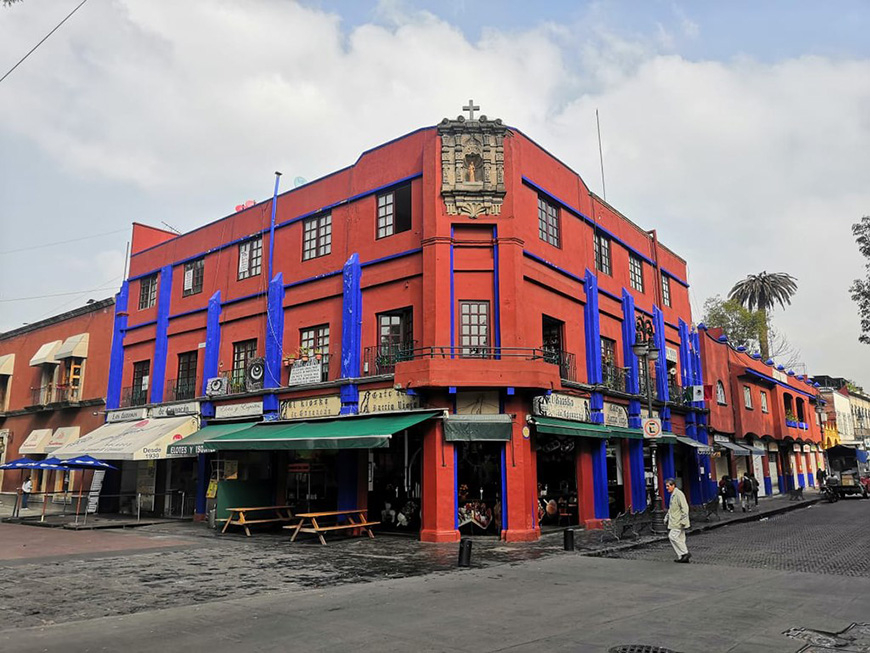
Credit: Diego Re23, CC BY-SA 4.0, via Wikimedia Commons
Coyoacán is one of the city’s sixteen boroughs. Each one of its neighbourhoods has a distinct identity, and it has an artistic vibe like no other.
Despite being the second most touristic area of the city after the Zócalo, the centre still feels like a small community. This is largely because most locals like to spend their free time there, and most residences are still one-family houses.
Also, many of the neighbourhoods keep old traditions alive – especially Pueblo de los Reyes and La Candelaria.
Some of the most famous figures from Coyoacán are Diego Rivera and Frida Kahlo. They both lived and worked here, and you can visit their houses and museums dedicated to their work, such as the Dolores Olmedo Museum and Anahuacalli.
Coyoacán also houses Ciudad Universitaria – the main campus of the National Autonomous University of Mexico, declared a World Heritage Site by UNESCO. It’s also the home of the National Arts Center and many museums.
Aside from the many highlights and landmarks, you can wander around the streets of Coyoacán and be inspired to photograph all the beautiful and colourful architecture.
You’ll also find many photo opportunities inside all the markets, cafés, cantinas, gardens, and cultural centres.
Best spots
- Jardín del Centenario, mainly its arches and the Coyotes Fountain.
- The kiosk in Plaza Hidalgo.
- Casa Azúl, which is the house of Frida Kahlo.
- The Church of La Conchita.
- Casa de Cultura Reyes Heroles with its gardens and art exhibitions.
- Monumental House Emilio El Indio Fernandez. This house was his residence and the set for many of his films during the Mexican Cinema Golden Age.
Best time to visit
Coyoacán gets incredibly crowded on weekends and holidays, but it’s also when it’s more lively. If you want to capture its spirit with all the street performers, vendors, and fairs – it’s best to come on any of these days.
Instead, if you want a quieter time to wander and enjoy the architecture and gardens, visiting on weekdays before 4 p.m. is best. After that, people start arriving to enjoy the evening there and gets more crowded.
Pro tip
Many historic places in Coyoacán ban the use of professional photographic equipment – even an entry-level DSLR would be considered professional.
So, before you get into trouble, make sure it’s OK to take photographs. If you inadvertently break a rule and are approached by the police or a security guard, please respond respectfully and stop taking photos.
Xochimilco
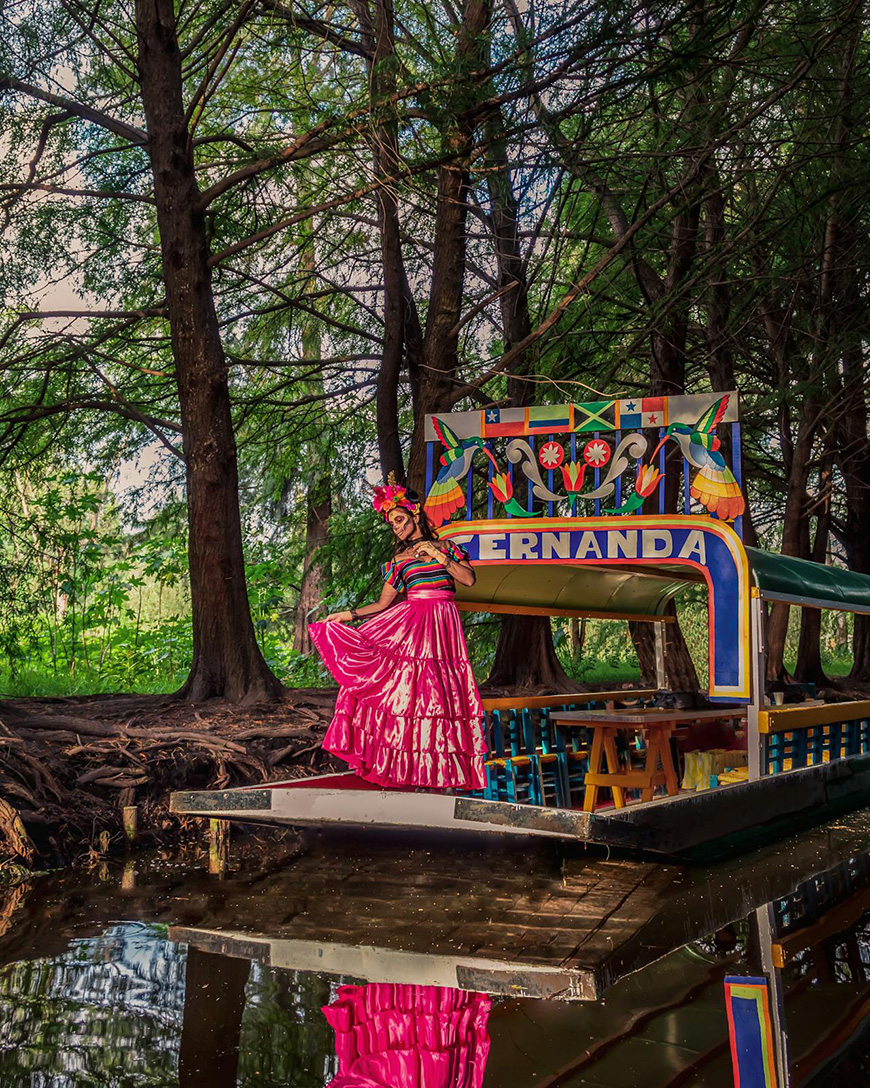
Credit: Oscar Damian Jimenez
As you may know, the current Mexico City was a series of settlements connected by water canals. The original population travelled in different types of boats.
One of them was the chalupas, which were flat and allowed transportation even in the shallower canals. Another characteristic of this pre-Hispanic life was the chinampas. These were pieces of artificial land where they could grow different plants and vegetables.
The territory, traditions, and lifestyle kept changing with the Spanish conquest throughout the centuries. Most of it was lost, but you can still get a taste of it in Xochimilco.
Nowadays, Xochimilco still has 170 km of canals. Some of them are dedicated to the entertainment of locals and tourists who can travel in colourful trajineras enjoying food and music offered to them on chalupas.
Other parts of Xochimilco are dedicated to agriculture, and many still use the chinampas system.
Take the HARD Photography Quiz! 🤯
Now it's time to really test your photography knowledge!
(99% of people can't get all the questions right...)

Best view
To travel the canals, you must go to the Nativitas pier and rent a trajinera.
Best time to visit
Sunrise and sunset offer spectacular views.
Pro tip
Around the Day of the Dead, many themed tours take you to La Isla de las Muñecas (the Island of the Dolls) or the horror show in the Chinampa La Llorona. If you want some spooky photos – this is a great location.
The Lesser-Known Mexico City Photo Spots (Local Secrets)
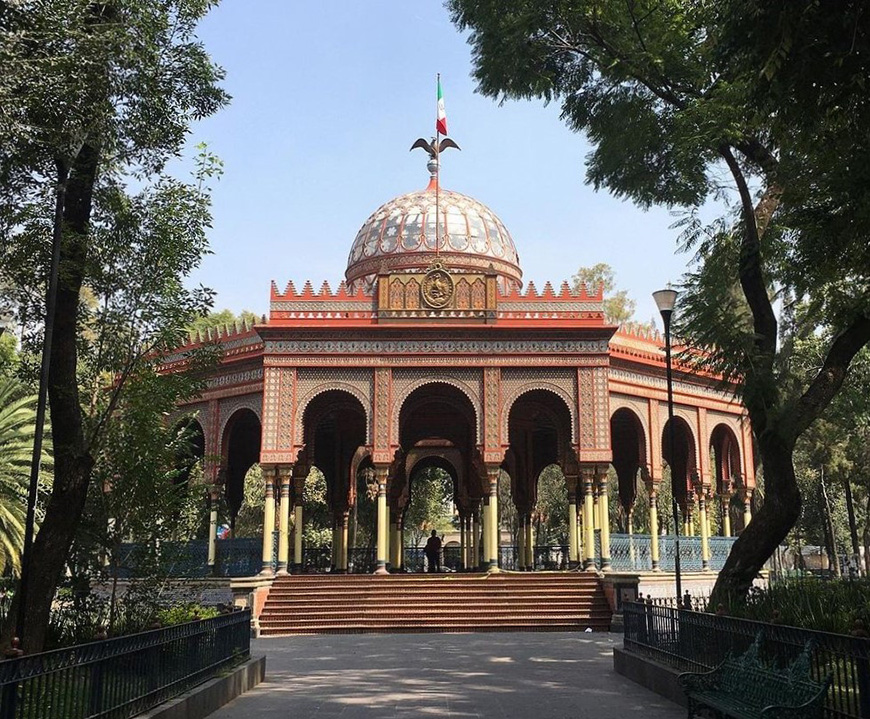
Credit: Tyrv, CC BY-SA 4.0, via Wikimedia Commons
As difficult as it was to narrow down a list of must-visit places, it was even harder to do with the hidden gems. Here are some of my personal favourites.
- Biblioteca Vasconcelos – La Vasconcelos is the biggest Library in Latin America. Three buildings of six levels each form the structure. On top of the literary works of art, it also houses the monumental piece Mátrix Móvil by Gabriel Orozco. You can also enjoy and photograph its gardens.
- Museo Universitario del Chopo – Also known as the Crystal Palace, this museum hosts contemporary art exhibitions. Its venue is a glass and steel building with an Art Deco style. It was built in 1902 to serve as a pavilion in the art and textile exhibition in Germany. After the exhibition, it was shipped back to Mexico and reassembled in its current location.
- Tianguis del Chopo – Last September, this street market made it into the list of the Immaterial Cultural Heritage of the city. It opens every Saturday, and it’s been there for 43 years. It hosts heavy metal artists and sells disks and items from this music genre. It’s always been frequented by punks, goths, and members of different urban tribes. The Tianguis del Chopo is an icon of the city’s counterculture.
- Kiosko Morisco – The structure is the main landmark of Alameda Park in the Santa Maria La Ribera neighbourhood. Its design is the only example in the city of the Neo-Mudejar architectural style.
- La Mexicana – This park lies on the west side of the city, and it’s one of the newest parks, having been inaugurated in 2017. It has an artificial lake surrounded by a large extension of green. From here, you have a clear view of the skyscrapers from the Santa Fe area. There’s also a skatepark, bars, and restaurants.
- Ex-Teresa Arte Actual – This museum hosts temporary exhibitions mainly dedicated to video art, performance and art installations. The building has a baroque facade and a neo-classical interior built-in 1616. Originally, it was a catholic convent. This is one of the constructions where you can see more clearly how the city is sinking. As this is a historic building – you may need a permit to photograph it.
- Panteón de Dolores – This is the main cemetery of the city. In it, you’ll find many iconic Mexican citizens or foreigners who had their residency here at the time of their passing. For us photographers, the tomb of Tina Modotti is a must. Also, if you want to experience the traditional Day of the Dead celebration – this is the best place in the city. Please remember to be respectful, as this is a cemetery, and most visitors are not tourists but people grieving or paying tribute.
FAQs about Taking Photos in Mexico City
Is it legal to fly a drone in Mexico City?
Tourists and foreigners are not legally allowed to fly drones in Mexico. To fly a drone, even if it’s a small one for recreational purposes, requires registration and permits, which only Mexican citizens can apply for.
If you are Mexican or travelling with a Mexican friend, you can fly a drone if you adhere to local and federal laws and regulations.
Is it legal to take street photos in Mexico City without permission?
You can take street photos in Mexico City without permission. However, you can only publish that photograph without the person’s consent if they are part of a large group on the street or if it’s for journalistic purposes.
Also, some historical buildings or copyrighted architectural pieces may require permission. In these cases, you might even be intercepted by the police before taking the photograph if you use professional equipment.
Are there any places in Mexico City where photography is strictly prohibited?
Taking pictures inside the metro – both the stations and the train- is strictly prohibited. Most commercial malls also ban photography.
Historic and government buildings either forbid photographs altogether or ban photography with professional equipment without permission.
The same goes for the Viveros Park, Centro Nacional de las Artes (Cenart) and the parts of Ciudad Universitaria that were named UNESCO Heritage.
Do I need a permit to shoot with a tripod in public places in Mexico City?
While parts of the city allow the use of a tripod, many of them don’t. For example, you can’t use a tripod in the park Chapultepec or the streets of the historical centre.
As a general rule, it is best not to use a tripod or heavy equipment unless you have a permit.
Is flash photography allowed in museums and indoor attractions?
Flash photography is usually not allowed in museums and indoor attractions. In most cases, this is indicated in signs at the entrance both in text and graphics, to avoid confusion. If you’re unsure, it’s best to ask a staff member.

Check out these 8 essential tools to help you succeed as a professional photographer.
Includes limited-time discounts.





